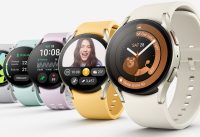Has Apple Already Ruined the Vision Pro for VR Gaming?
Apple is gearing up for the release of its highly anticipated Vision Pro headset, and they’re hoping to have a robust lineup of third-party apps ready to go when it hits the market in 2024.
Even though the launch is still a while away, Apple has wasted no time in announcing the release of the software development kit (SDK) for the Vision Pro. This means that developers can now dive headfirst into crafting their own immersive “spatial experiences” for this not-quite-virtual-reality, not-quite-augmented-reality wonder.

To support developers in their creative endeavors, Apple is setting up development labs in various locations around the world, including Cupertino, the U.K., Germany, China, Taiwan, and Japan. These labs will provide the perfect playground for devs to put their apps to the test on the Vision Pro hardware. Alternatively, teams can apply for dev kits to get a taste of how their apps perform on this cutting-edge device. Susan Prescott, the VP of developer relations at Apple, assures us that coding for the Vision Pro will be as familiar as coding for the company’s other platforms, thanks to the foundational frameworks like Xcode, SwiftUI, ARKit, and TestFlight. If you’re a member of the Apple Developer Program, you can already access the SDK and the updated dev software.
While Apple has showcased the Vision Pro’s compatibility with existing apps like FaceTime and Safari, there’s a world of possibilities waiting to be explored by external developers. The visionOS AR infrastructure holds tremendous potential for creating mind-blowing experiences, but we’ll have to exercise a little patience before we witness the full extent of their innovation.
Recently, 9to5Mac managed to get a sneak peek into the visionOS suite, offering a glimpse of the Vision Pro’s user interface. Based on the images shared by Ian Zelbo, it seems that the headset will come equipped with a Control Center and Spotlight Search that bear a striking resemblance to the beloved macOS. Additionally, familiar Apple apps like Freeform will be readily available.
While the images reaffirm what we already knew from Apple’s initial announcement and Gizmodo’s hands-on experience, there are a few surprises in store. The UI will feature a virtual keyboard and an emoji keyboard, raising questions about whether users will have the ability to type using gesture controls.
It’s no secret that the App Store played a pivotal role in transforming the iPhone into the iconic device it is today. The army of dedicated developers tirelessly working to create new apps and generate revenue for Apple propelled the smartphone from a mere “telephone with a screen” to a pocket-sized computer that connects us all. Now, Apple is banking on its legion of talented third-party developers to achieve a similar feat right out of the gate with the Vision Pro. And knowing Apple’s unwavering confidence, they believe their Cupertino-based tech empire has what it takes to make it happen.




